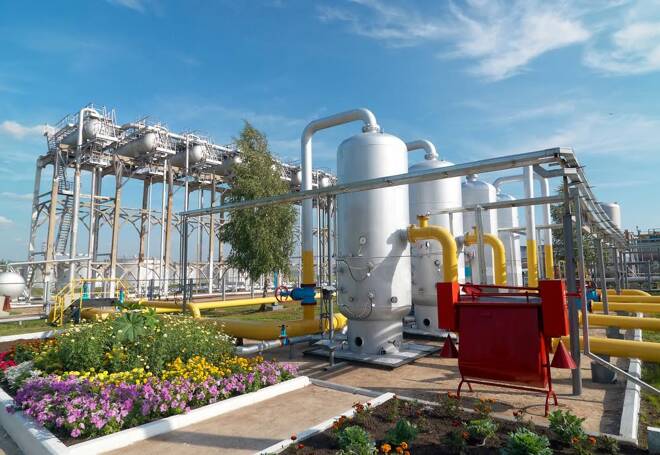Advertisement
Advertisement
Natural Gas Price Fundamental Daily Forecast – Likely to Pullback into $2.413 – $2.369
By:
The downside momentum created by the bearish EIA report and valuation issues is encouraging investors who caught the recent rally to book profits.
Natural gas futures are trading lower for a second session shortly before the regular session opening on Friday. Weighing on prices is Thursday’s bearish weekly government storage report. The futures market is also being pressured by lower spot gas prices that being influenced by steep declines in California after traders relaxed their recent concerns about lingering intense heat.
At 11:07 GMT, October natural gas futures are trading $2.500, down $0.003 or -0.12%.
Traders are still watching for signs of increased demand for liquefied natural gas. This has been driven by higher European prices and a slowdown in the number of cancellation. Bespoke Weather Services went a little bit further by suggesting these expectations may have put prices into overbought territory.
Bespoke said either the rally over-extended itself, or it was illogical to have prices as low as they had been. As is often the case, the firm said the answer is likely somewhere in the middle, according to Natural Gas Intelligence.
The recent rally was “too much, too fast,” given some loosening of balances showing up in Bespoke’s data, which could put some containment risk back on the table if weather does not stay bullish.
US Energy Information Administration Weekly Storage Report
The EIA reported a 43 Bcf injection into storage inventories for the week-ending August 14. Storage is now at 3,375 Bcf. That is 595 Bcf higher than year-ago levels and 442 Bcf above the five-year average of 2,933 Bcf.
Ahead of the report, Natural Gas Intelligence (NGI) is reported that a Bloomberg survey of eight analysts showed injection estimates ranging from 36 Bcf to 48 Bcf, with a median build of 43 Bcf. A Reuters poll had a wider range from 33-53 Bcf with the same median build expectation of 43 Bcf.
NGI’s storage model predicted a 46 Bcf injection for this week’s report.
According to NatGasWeather, “For today’s EIA storage report, national surveys are clustered at +43 Bcf, near exact to the 5-year average of +44 Bcf. It was warmer than normal over most of the U.S. besides the cooler Northwest. Our algorithm predicts a build of +41-42 Bcf, but difficult to account for how much fuel switching occurred after a more than 50 cent spike.”
Short-Term Weather Outlook
According to NatGasWeather for August 21-27, “Hot conditions continue across the western and southern U.S. with highs of 90s and 110s, hottest in California and Southwest deserts. The Midwest, Mid-Atlantic, Central Plains, and Northeast remain comfortable due to weak cool fronts with highs of 70s and 80s. Warmer temperatures will spread up the East Coast Sunday through Wednesday for a swing to stronger national demand. However, fresh cool shots will arrive into the northern Midwest and Northeast Thursday – Friday. East Texas, the South, and Southeast will see increasing clouds, showers, and cooling early next week as tropical systems approach.”
Daily Forecast
The downside momentum created by the bearish EIA report and valuation issues is encouraging investors who caught the recent spike price to book profits.
The selling pressure looks strong enough to drive the October natural gas futures contract into at least $2.413 to $2.369. Buyers could come in on the first test of this zone, but if $2.369 fails as support then look for the selling to continue toward $2.228.
About the Author
James Hyerczykauthor
James Hyerczyk is a U.S. based seasoned technical analyst and educator with over 40 years of experience in market analysis and trading, specializing in chart patterns and price movement. He is the author of two books on technical analysis and has a background in both futures and stock markets.
Did you find this article useful?
Latest news and analysis
Advertisement
